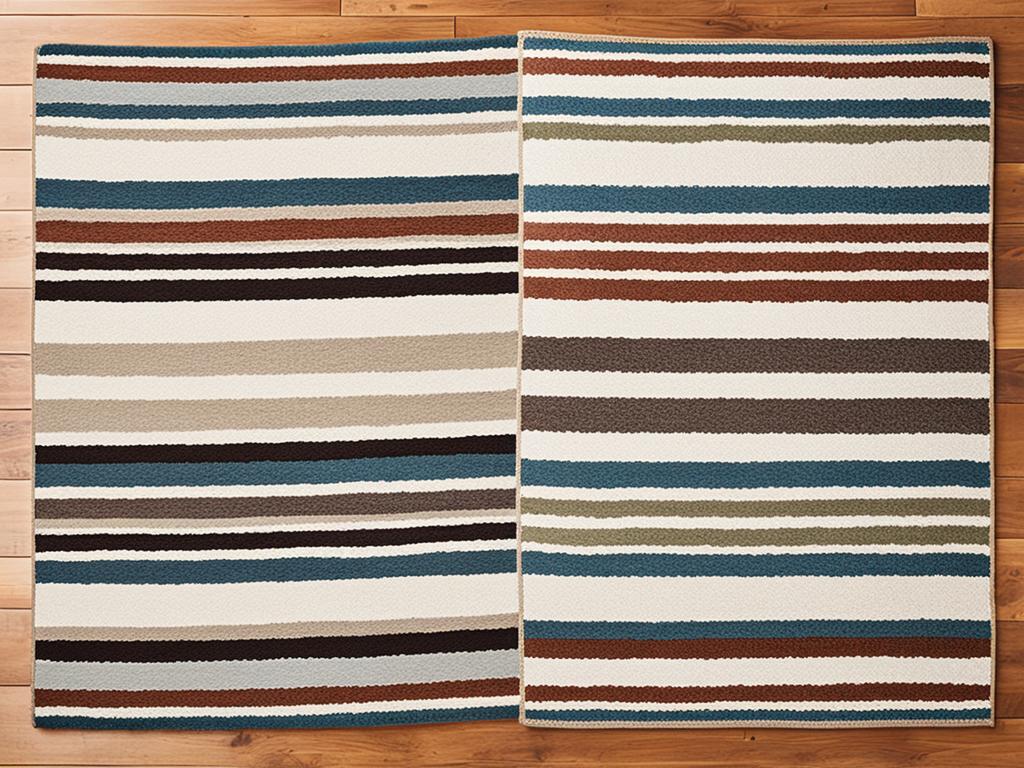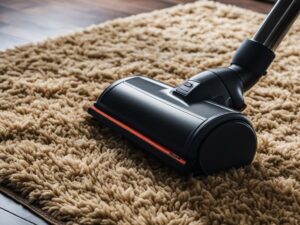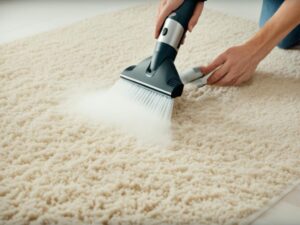When it comes to choosing a rug for your home, understanding the differences between polypropylene and polyester rugs is essential. Both materials have their own advantages and disadvantages, so let’s compare them to help you make the best decision for your rug needs.
Key Takeaways:
- Polypropylene and polyester rugs are two common options for homeowners.
- Polyester rugs are known for vibrant colors and affordability.
- Polypropylene rugs are durable and mildew resistant.
- Both rug types are low maintenance and stain resistant.
- Consider factors like water absorbency, heat resistance, and softness when making your decision.
What Are Polyester Rugs?
Polyester rugs are a popular choice for many homeowners due to their vibrant colors and affordability. These rugs are made from PET plastic pellets or recycled plastic, making them an environmentally friendly option. Polyester rugs are often machine manufactured, resulting in consistent quality and a wide variety of designs to choose from.
One of the key advantages of polyester rugs is their ability to hold vibrant colors. The fibers used in polyester rugs have natural stain resistance, which helps the colors retain their brightness over time. This makes polyester rugs an excellent choice for adding a pop of color to any room in your home.
When it comes to durability, polyester rugs perform well in low to medium foot-traffic areas. However, they may show signs of wear more quickly in high-traffic areas compared to rugs made from other materials like wool or nylon.
Keeping your polyester rug clean is relatively easy. The stain-resistant properties of polyester fibers make spills and stains easier to remove. Regular vacuuming or sweeping will help maintain the rug’s appearance, and spot cleaning can be done as needed.
Now, let’s take a closer look at the similarities and differences between polyester and polypropylene rugs to understand which rug material may be the best choice for your home.
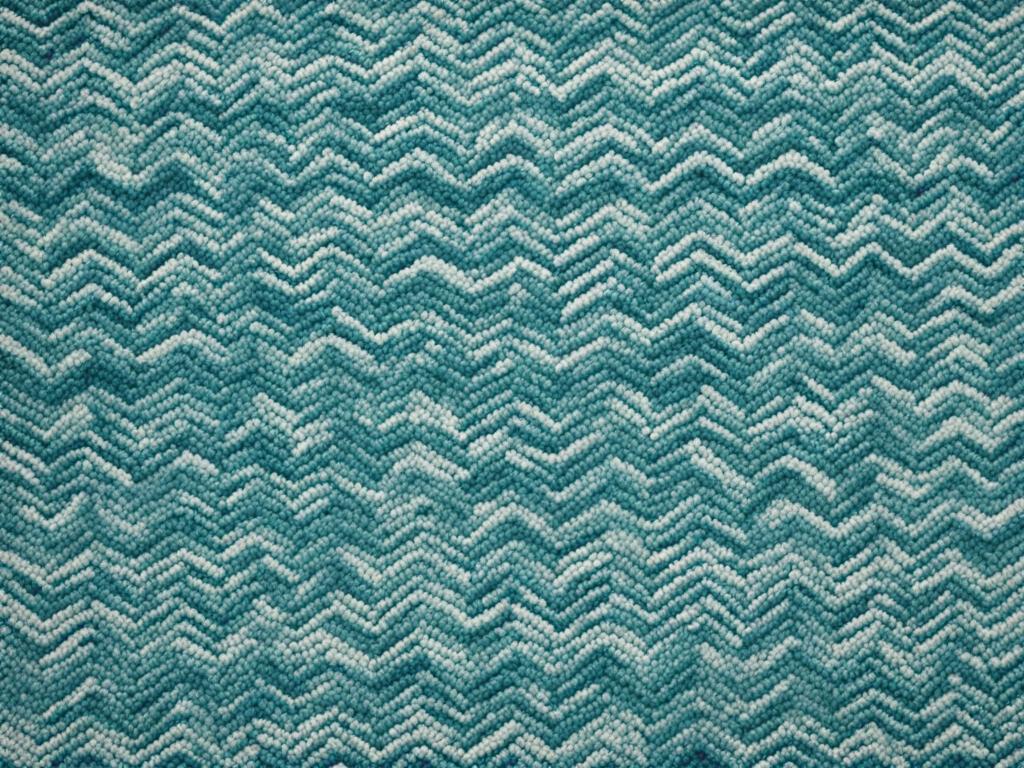
Differences Between Polyester and Polypropylene Rugs
While polyester and polypropylene rugs have some similarities, there are also notable differences that may impact your decision when choosing a rug for your home:
- Water Absorbency: Polyester rugs are more absorbent than polypropylene rugs, which can make them prone to water damage if exposed to excessive moisture.
- Heat Resistance: Polypropylene rugs have better heat resistance compared to polyester rugs, making them more suitable for areas that receive direct sunlight.
- Softness: Polyester rugs are softer and more comfortable underfoot compared to polypropylene rugs.
- Backing Material: The backing material of synthetic rugs can vary. Some polyester rugs may have a jute backing, which requires special care during cleaning, while polypropylene rugs typically have a synthetic backing.
Now that we have explored the characteristics of polyester rugs and the differences between polyester and polypropylene rugs, the next section will focus on polypropylene rugs, providing a comprehensive understanding of their features and benefits.
What Are Polypropylene Rugs?
Polypropylene rugs are a popular choice for both residential and commercial spaces. Made from a combination of natural gas and oil, these rugs offer durability and affordability. While they have a similar manufacturing process to polyester rugs, polypropylene rugs use a different type of plastic.
One of the notable characteristics of polypropylene rugs is their resistance to water absorption. Unlike polyester rugs, which can be more prone to water damage, polypropylene rugs are less absorbent. This makes them ideal for areas where spills and moisture are a concern. Additionally, their mildew-resistant properties help to maintain a clean and fresh environment.
However, it’s important to note that polypropylene rugs have lower heat resistance compared to polyester rugs. Exposure to direct sunlight may cause fading, so it’s best to place polypropylene rugs away from intense sunlight. Despite this drawback, polypropylene rugs are still a practical and budget-friendly option for various spaces.
When selecting a rug for your home or office, consider the specific requirements of your space. Polypropylene rugs are an excellent choice for areas with higher moisture levels and where durability is essential. While they may not offer the same level of heat resistance as polyester rugs, their affordability and resistance to water make them an attractive option.
| Characteristics | Polypropylene Rugs | Polyester Rugs |
|---|---|---|
| Affordability | ✔️ | ✔️ |
| Durability | ✔️ | ✔️ |
| Water Absorbency | ✖️ | ✔️ |
| Mildew Resistance | ✔️ | ✔️ |
| Heat Resistance | ✖️ | ✔️ |
| Fading in Direct Sunlight | ✔️ | ✖️ |
Table: A comparison of characteristics between polypropylene and polyester rugs
Polypropylene vs Polyester Rugs: Similarities
When it comes to choosing a rug for your home, polypropylene and polyester rugs are both popular options. These synthetic rugs offer a range of benefits, including affordability, durability, low maintenance, and stain resistance.
Affordable Price: One of the main advantages of polypropylene and polyester rugs is their affordability. Compared to hand-knotted rugs, which can be quite expensive, polypropylene and polyester rugs offer a budget-friendly option without compromising on quality.
Durability: Both polypropylene and polyester rugs are known for their durability. These synthetic materials are designed to withstand heavy foot traffic and everyday wear and tear. However, it’s important to note that the durability of these rugs may vary in high-traffic areas and over time.
Low Maintenance: Polypropylene and polyester rugs are easy to maintain. Regular vacuuming or sweeping helps to keep them clean and free from dust and debris. In case of any spills or stains, spot cleaning is usually sufficient to remove them.
Stain Resistance: Another similarity between polypropylene and polyester rugs is their stain resistance. The synthetic fibers used in these rugs are naturally resistant to stains, making them a practical choice for households with children or pets.
“Polypropylene and polyester rugs offer an affordable and low-maintenance option for homeowners, without compromising on durability or stain resistance.”
Overall, polypropylene and polyester rugs share several similarities. They are both affordable, durable, easy to maintain, and resistant to stains. These qualities make them a popular choice for homeowners looking for a practical and cost-effective rug option.
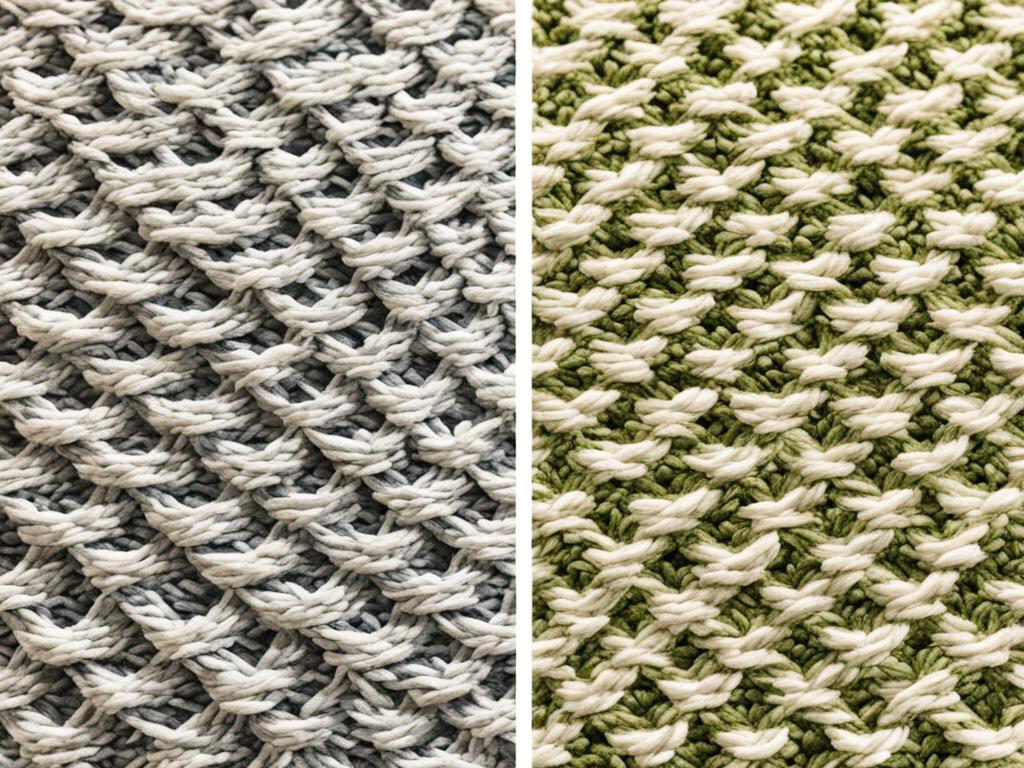
| Similarities | Polypropylene Rugs | Polyester Rugs |
|---|---|---|
| Affordability | ✓ | ✓ |
| Durability | ✓ | ✓ |
| Low Maintenance | ✓ | ✓ |
| Stain Resistance | ✓ | ✓ |
Polypropylene vs Polyester Rugs: Differences
When comparing polypropylene and polyester rugs, there are several key differences that can help you make an informed decision. Understanding these distinctions will ensure you choose the right rug for your specific needs and preferences.
Water Absorbency
Polypropylene rugs are known for their low water absorbency. This characteristic makes them highly resistant to stains and mildew, making them an excellent choice for areas prone to spills or high moisture levels. On the other hand, polyester rugs tend to have higher water absorbency, which may make them more susceptible to staining and mildew without proper care.
Heat Resistance
One important factor to consider is heat resistance. Unfortunately, polypropylene rugs have lower heat resistance compared to polyester rugs. This means that placing polypropylene rugs in direct sunlight or near heat sources can cause fading or damage over time. Polyester rugs, however, have better heat resistance and are less likely to fade under direct sunlight.
Softness
When it comes to softness, polyester rugs tend to be the winner. Thanks to their fibers’ composition, polyester rugs provide a softer and more comfortable feel underfoot compared to polypropylene rugs.
Backing Material
The backing material used in synthetic rugs can vary. Some rugs, including polypropylene and polyester options, may have a jute backing. Jute is a natural fiber that requires special care to prevent moisture absorption and potential damage. It is important to take note of the backing material when considering maintenance and durability concerns.
Summary of Differences:
| Polypropylene Rugs | Polyester Rugs | |
|---|---|---|
| Water Absorbency | Less absorbent | More absorbent |
| Heat Resistance | Less resistant | More resistant |
| Softness | Less soft | More soft |
| Backing Material | Jute (may require special care) | Jute (may require special care) |
Understanding the differences between polypropylene and polyester rugs allows you to make an informed decision based on your specific requirements. Whether you prioritize water resistance, heat resistance, softness, or backing material, there is a rug out there that meets your needs perfectly.
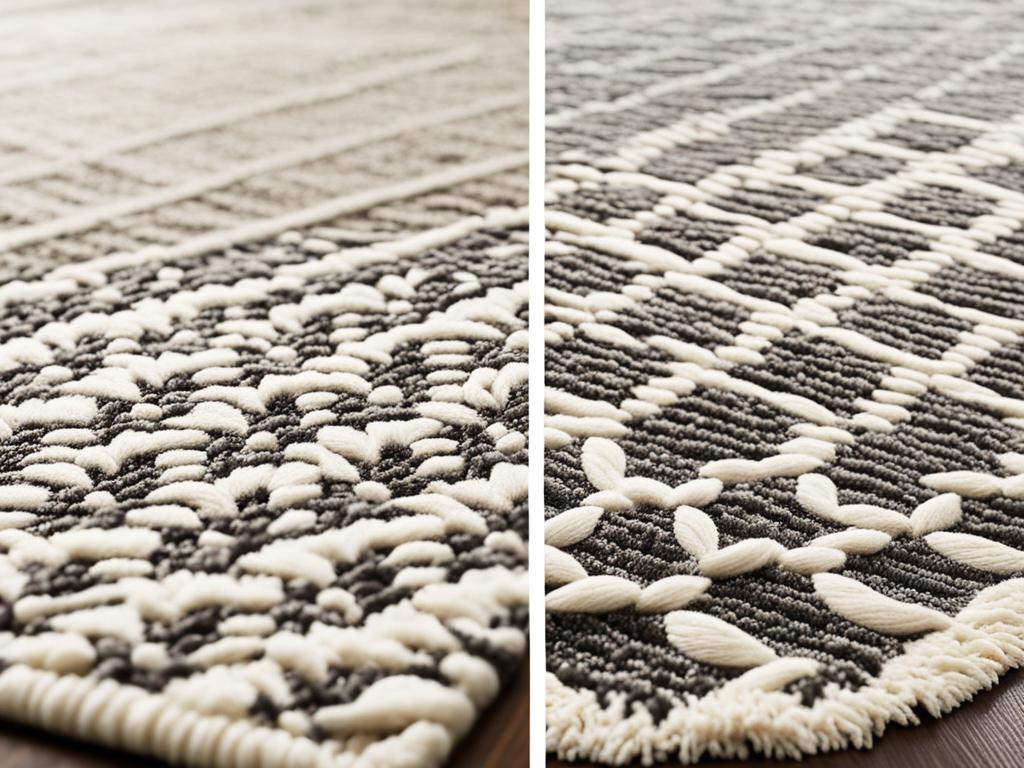
Now that you have a clear understanding of the differences, it’s time to choose the rug material that best suits your lifestyle and decor preferences.
Conclusion
After analyzing the differences between polypropylene and polyester rugs, it is clear that both materials have their own unique advantages and disadvantages. When choosing the best rug material for your home, it is important to consider factors such as the location of the rug, level of foot traffic, exposure to sunlight, and desired comfort.
If you are looking for a rug that is resistant to water and highly durable, polypropylene rugs are the ideal choice. These rugs are known for their ability to withstand spills and are perfect for high-traffic areas. On the other hand, if you prioritize vibrant colors and softness underfoot, polyester rugs are the way to go. They are also stain-resistant and easy to clean.
In the end, the decision between polypropylene and polyester rugs ultimately depends on your specific needs and preferences. Take into account the unique characteristics of each material and find the perfect rug that aligns with your requirements. So go ahead, happy rug shopping and may you find the ideal rug material for your home!
